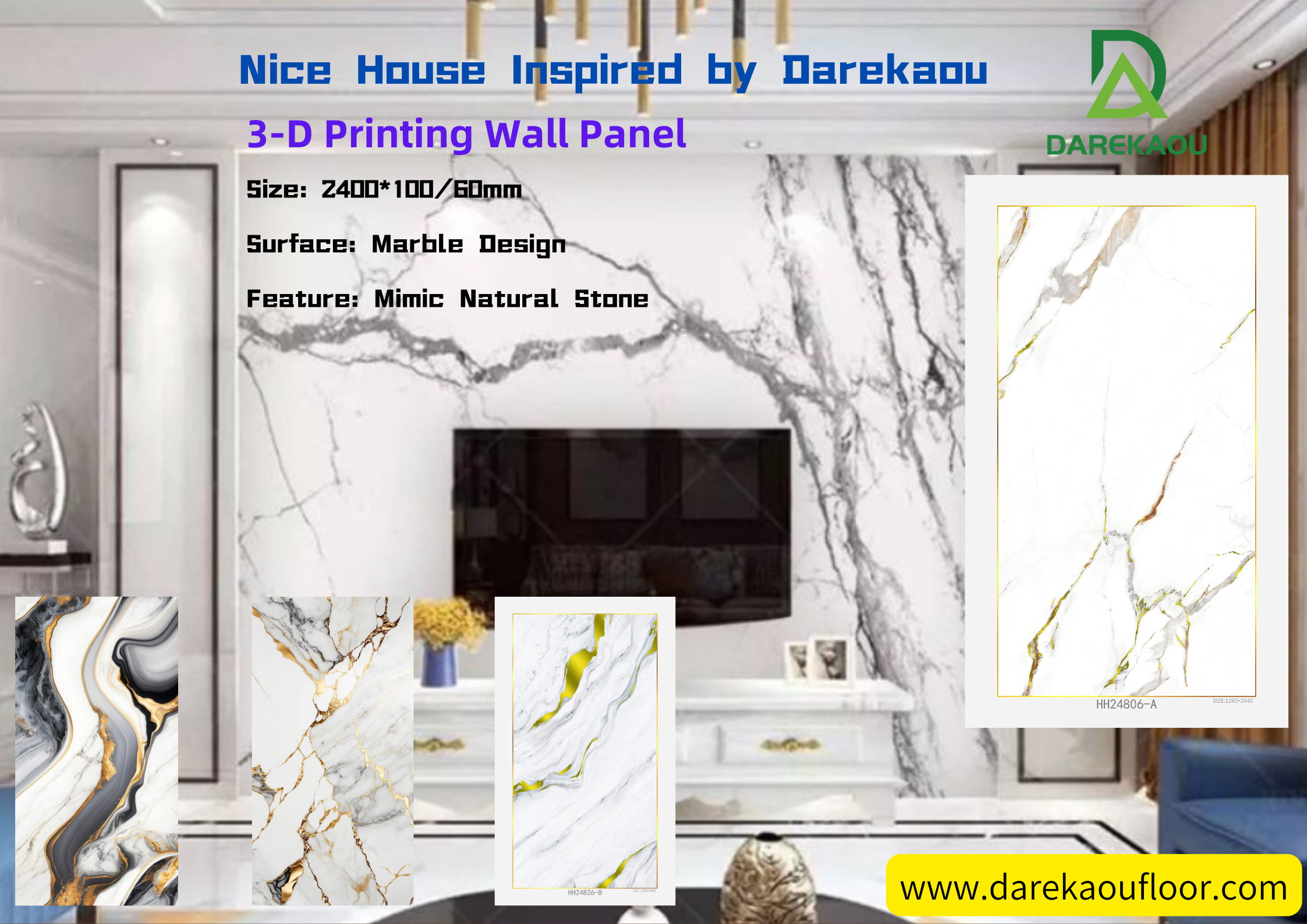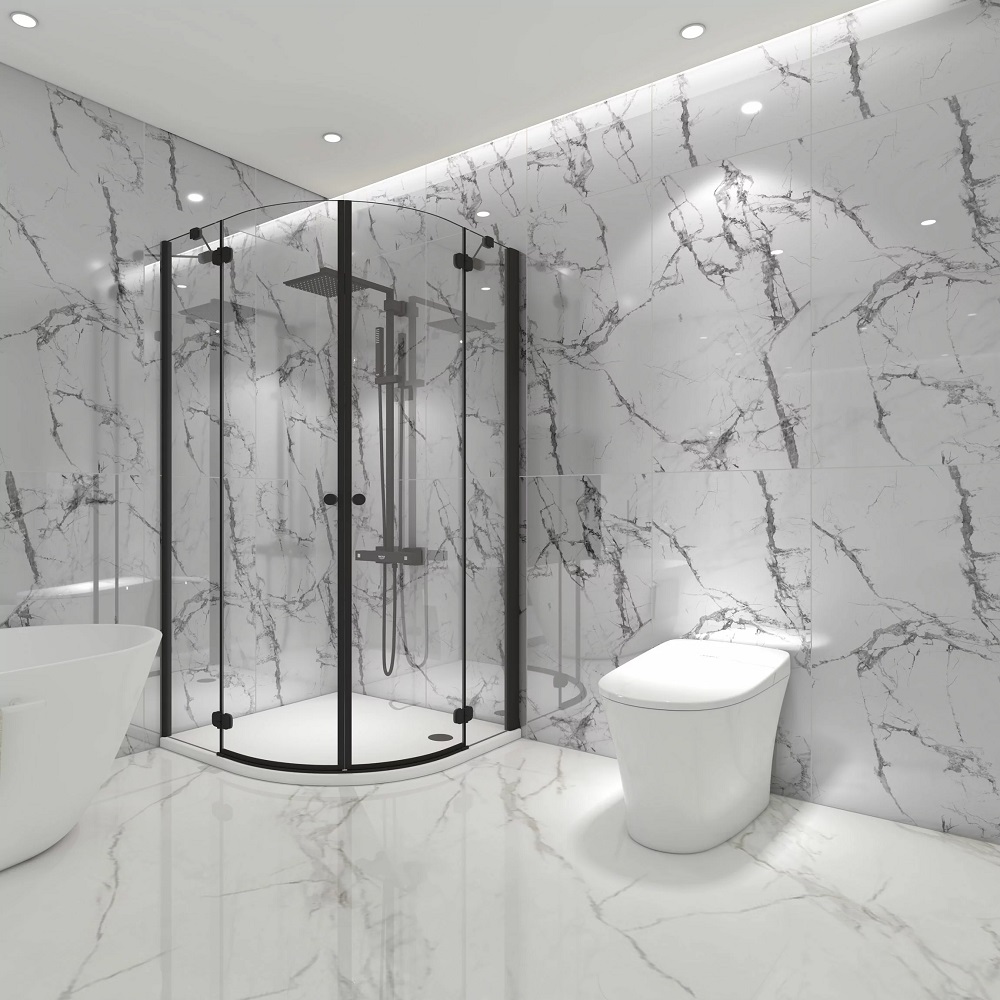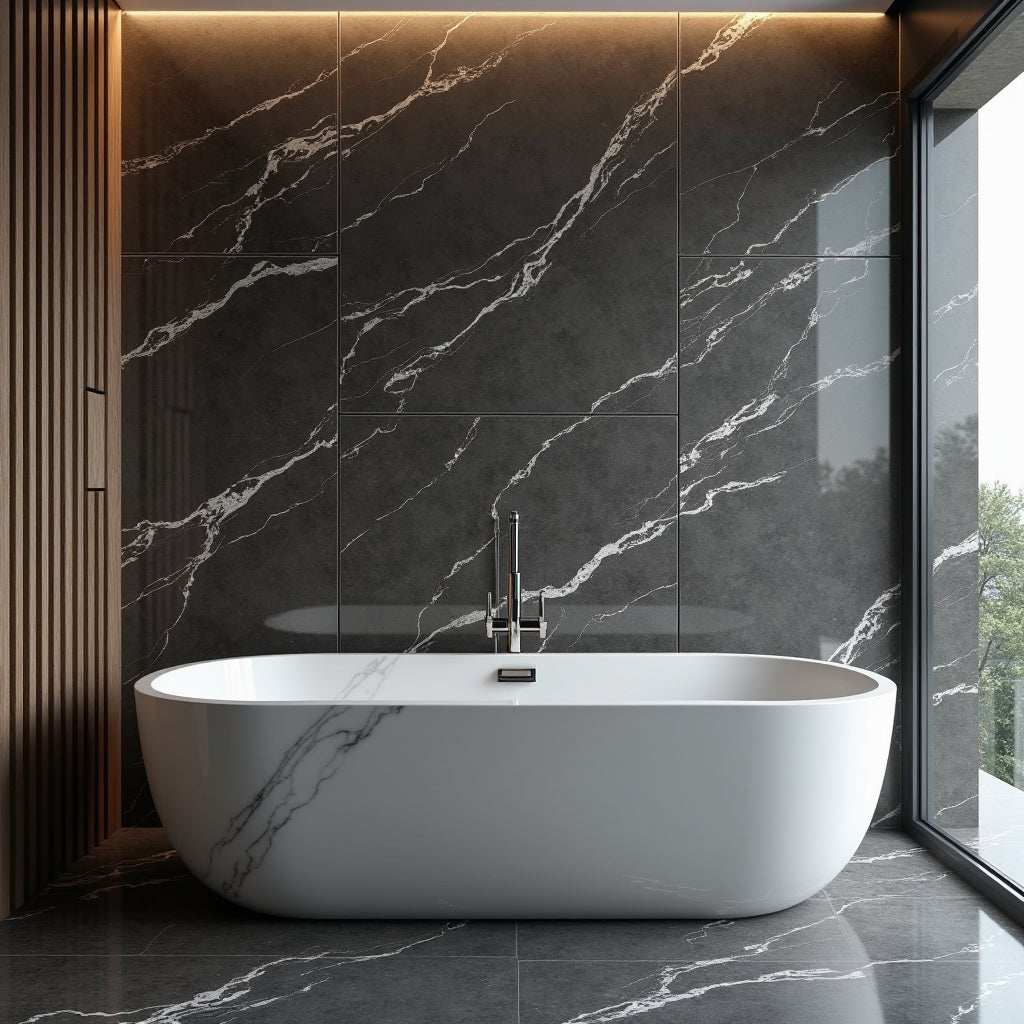Introduction
Bathrooms are the most moisture-prone spaces in any home. Traditional tiles, though durable, are costly to install and require constant grout maintenance. That’s why waterproof bathroom wall panels—especially PVC wall panels and SPC panels—have surged in popularity as affordable, stylish, and low-maintenance alternatives.
In this comprehensive guide, we’ll compare PVC vs SPC vs Tile wall panels, break down their pros and cons, costs, installation tips, and help you decide which option is best for your bathroom remodel in 2025.

Why Waterproof Wall Panels Are Gaining Popularity
· Zero Grout, Zero Mold: Unlike ceramic tiles, panels install with interlocking or adhesive systems, leaving no porous grout lines where mold and mildew thrive.
· Fast Installation: A full bathroom can be covered in a matter of hours rather than days.
· Affordable Luxury: Mimic stone, marble, or wood aesthetics at a fraction of tile or slab cost.
· Easy Maintenance: Smooth, wipe-clean surfaces need no harsh chemicals or resealing.
· Versatility: Suitable for showers, wet rooms, half baths, and even commercial washrooms.
Option 1: PVC Wall Panels
What Are PVC Panels?
PVC (Polyvinyl Chloride) panels are hollow-core boards with a smooth, water-resistant surface. They are lightweight, cost-effective, and designed for easy DIY installation.
Pros:
· 100% waterproof and anti-mold.
· Lightweight and easy to cut.
· Wide range of colors and finishes, including marble, wood, and matte textures.
· Budget-friendly: $2.50 – $5.00 per sq. ft.
Cons:
· Less impact-resistant compared to SPC.
· Can feel “plasticky” if low-quality.
· Limited lifespan in high-traffic commercial spaces.
Best For: Budget bathroom remodels, rental properties, quick renovations.
Option 2: SPC Wall Panels
What Are SPC Panels?
SPC (Stone Plastic Composite) wall panels combine limestone powder and stabilizers for a denser, stronger, and more realistic alternative to PVC.
Pros:
· 100% waterproof and highly durable.
· Authentic textures that mimic natural stone, marble, and concrete.
· Fire-retardant and scratch-resistant.
· More rigid—no warping, even in humid climates.
Cons:
· Heavier and requires more precise installation.
· Higher upfront cost: $4.00 – $7.50 per sq. ft.
Best For: Premium bathroom designs, high-moisture environments, long-term projects.

Option 3: Tile Alternatives (Ceramic & Porcelain)
Traditional Tiles:
Tiles have long been the gold standard in bathroom finishes. They are waterproof, scratch-resistant, and available in endless styles.
Pros:
· Extremely durable, lasting 20+ years.
· Timeless look and high resale value.
· Can be paired with underfloor heating for added comfort.
Cons:
· High installation cost ($10 – $25 per sq. ft. installed).
· Grout lines require regular cleaning and resealing.
· Longer installation time.
Best For: Luxury bathrooms, high-budget projects, homeowners who prefer traditional finishes.
PVC vs SPC vs Tile: Side-by-Side Comparison
| Feature | PVC Panels | SPC Panels | Ceramic/Porcelain Tiles |
| Waterproof | 100% | 100% | 100% |
| Durability | Medium | High | Very High |
| Installation | Easy DIY | Moderate (DIY/Pro) | Professional required |
| Cost (per sq. ft.) | $2.50 – $5.00 | $4.00 – $7.50 | $10 – $25 (installed) |
| Aesthetic Realism | Good | Excellent | Excellent |
| Maintenance | Very Low | Very Low | Medium (grout cleaning) |
| Lifespan | 10–15 years | 15–20 years | 20+ years |
Design Trends for Bathroom Wall Panels in 2025
1. Marble-Look Panels: SPC panels with Carrara or Calacatta finishes give luxury without the maintenance.
2. Woodgrain Walls: PVC panels in oak or walnut bring warmth to spa-style bathrooms.
3. Large Format Panels: Create a seamless, grout-free look with minimal joints.
4. Matte Finishes: Trending over high-gloss for a natural, modern appeal.
5. Checkerboard & Patterns: Achieved with SPC/LVT tiles for bold statement walls.

Installation Tips
· Preparation: Ensure the wall surface is clean, dry, and even.
· Fixing Method: Choose between adhesive bonding, screws, or click-lock depending on panel type.
· Sealing: Always use waterproof sealant at joints, corners, and around fixtures.
· Accessories: Don’t forget trim pieces and end caps for a professional finish.
Maintenance & Care
· Cleaning: Use a damp cloth with mild soap; avoid abrasive cleaners.
· Longevity: With proper installation, PVC panels last 10–15 years, while SPC can exceed 20.
· Mold Resistance: Panels are inherently non-porous, reducing mold risk.
Conclusion
If you want affordable, quick installation and a wide range of designs, PVC panels are your best choice. For a premium, long-lasting solution, SPC panels outperform PVC in strength and realism. If budget is no issue and you prefer timeless tradition, ceramic or porcelain tiles remain unbeatable.
The right choice depends on your budget, style preferences, and long-term maintenance expectations. But in 2025, SPC and PVC wall panels are proving to be the go-to solutions for waterproof, stylish, and hassle-free bathroom upgrades.
Suggested Internal Linking
· Anchor “PVC wall panels”
· Anchor “PU stone panels”
· Anchor “Acoustic slat wall panels”
English
العربية
Français
Русский
Español
Português
Deutsch
italiano
日本語
한국어
Nederlands
Tiếng Việt
ไทย
Polski
አማርኛ
Türkçe
ភាសាខ្មែរ
Bahasa Melayu
ဗမာစာ
Filipino
Bahasa Indonesia
magyar
Română
Čeština
Монгол
қазақ
Српски
हिन्दी
فارسی
Slovenčina
Norsk
Svenska
українська
Ελληνικά
Suomi
Հայերեն
עברית
Latine
Dansk
Afrikaans
Eesti keel
Māori
Oʻzbekcha
Azərbaycan dili
Беларуская мова
Български
ქართული
íslenska
Кыргызча
Татарча
ئۇيغۇرچە














